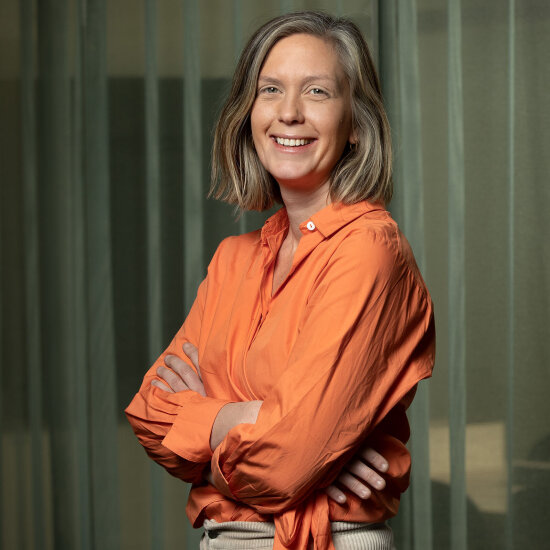The cabin will probably smell like freshly baked waffles and serve as a meeting place for people to carry out all kinds of activities, not unlike the traditional community centre. The contrast with what we normally associate with smart cities is striking. Where is the technology? The smart apps? They’re there too, of course, but only as a tool for making the community centre even more attractive for those who use it.
Smart is not always smart
“If we are to succeed in the transition to smart cities and society, developments need to be people-oriented, with good solutions for city residents,” says Siri Holmboe Høibo, Architectural Consultant at DOGA.
According to Siri, there is a sense of utopia when it comes to the possibilities of technology and smart cities. But a smart city is not necessarily a good city for those who live there and we have perhaps not sufficiently thought through all the consequences of technology and how it can affect urban living and a sense of belonging.
DOGA would like to draw attention to this in collaboration with the largest smart city conference in the Nordic countries, Nordic Edge, which kicks off in Stavanger in September.
Student competition
During the conference, DOGA will be organising a professional programme, in addition to setting up a pavilion at the conference exhibition. This is where the students come into the picture. In the spring of 2017, DOGA announced a student competition to create a concept for the exhibition.
“We want to create a different type of pavilion that shows a smart city based on the needs of its residents. No one is better equipped to do so than young and creative design and architecture students, says Siri.
A quiet place to meet
During a joint workshop, the students came up with five proposals for the pavilion. What they all have in common is that they revolve around a meeting place where people can retreat and find peace and quiet in an ever faster paced and more digitised city.
“We get caught up in the hustle and bustle of the everyday and are forced to think about too many things too quickly,” says Elias Bjørnson Olderbakk. He was part of the group whose proposal was ultimately chosen: the urban community centre.
The idea is a combination of a physical building and a digital service that matches users to the building. The thought is that the cabin can be set up on former parking lots and that different cabins can serve different functions, such as a kitchen, workplace, modular furniture cabin, workshop, greenhouse, and so on.
The best part is that the students get to see their ideas manifested in a physical building in real life. The community centre will be built in early September by Termowood in Hurdal before being transported to Stavanger.
“We believe that the cities of the future will have to include places where we can meet physically, not just digitally.’’
Collaborative project
“It’s turned out to be a fantastic product, first of all due to the enthusiastic and creative students from the school, but also thanks to our collaborative partners,” explains Siri.
The pavilion has been further refined in partnership with Einar Sneve Martinussen, an associate professor at The Oslo School of Architecture and Design. The students visited Termowood and Vestre and received guidance from Kyrre Sundal from MAD arkitekter.
Smart city of the future
“We believe that the cities of the future will have to include places where we can meet physically, not just digitally. The focus may be on bringing together people in the neighbourhood and making waffles, repairing bicycles or simply chatting. This is what people need,” believes Elias.
About Nordic Edge
Nordic Edge is a conference and exhibition that will be held in Stavanger from 26-28 September 2017. In only a few years’ time, the conference has become one of the most important arenas in the Nordic country and in Europe for knowledge sharing and inspiration with a focus on smart societies. DOGA’s pavilion at this year’s Nordic Edge conference was developed by students of AHO in collaboration with and with the support of AHO, Termowood, Vestre and MAD arkitekter. The students behind the winning proposal: Elias Bjørnson Olderbakk, Inés Andrea Høvring Delgado, Marte Wang Engen, Tim Caesar Knutsen and Geir Atle Hustof.

